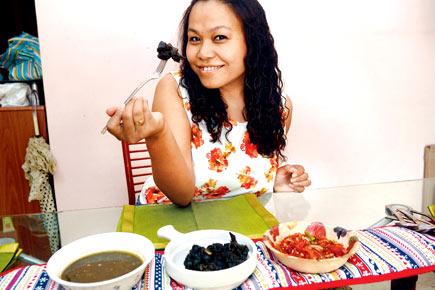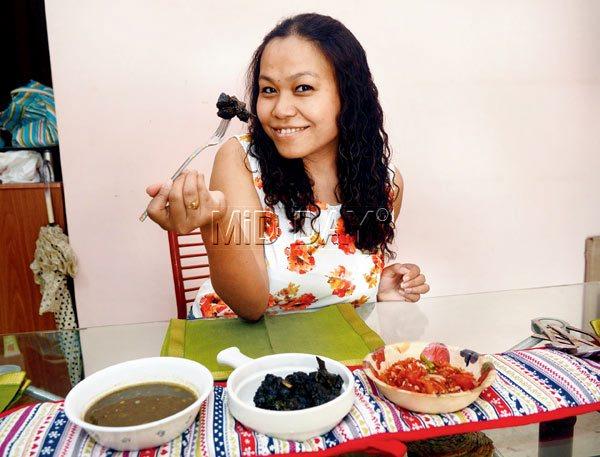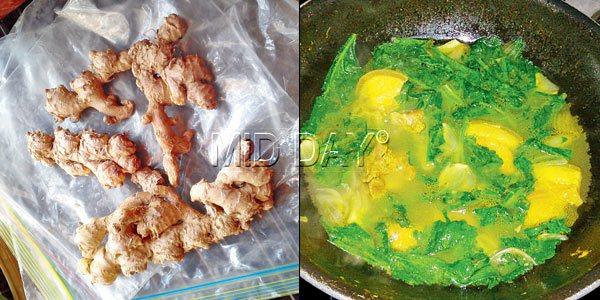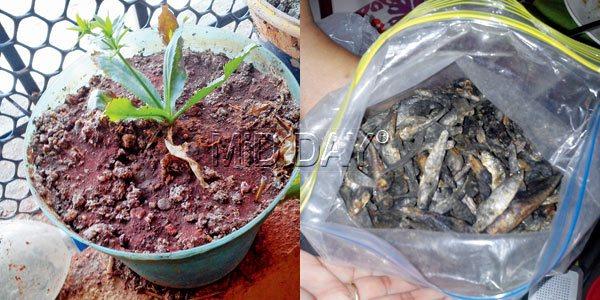As a new outlet in Mumbai prepares to serve authentic cuisine from Meghalaya, Anu Prabhakar talks to experts of the cuisine about the state’s love for chutneys, dried fish, pork and sesame seeds

Food, Meghalaya, cuisine, Gitika Saikia, North-east Indian cuisine, Meghalayan dishes, Daineiiong, Nakham Bitchi, Dohneiiong
To the residents of Navi Mumbai and the city’s food lovers in general, Meghalaya House in Vashi is a bit of a delicious puzzle. For, the state bhavan’s canteen serves food that is predominantly from Kerala and attracts as many customers as the neighbouring Kerala House does — customers, who crave for a helping of red rice, a scoop of avial, or a slice of karimeen.
ADVERTISEMENT

Gitika Saikia, who promotes North-east Indian cuisine through workshops, pop-ups and cookery shows, with Meghalayan dishes Daineiiong, Nakham Bitchi and Dohneiiong, at her Malad residence. Pics/Sayed Sameer Abedi
But as the current canteen’s contract with the bhavan draws to a close, the House, as of now, plans to serve more Meghalaya dishes at its new canteen, which will be open around next month, says an official from the state bhavan. The move will, no doubt, warm the heart of the experimental food lover for, as we learnt the hard way during the course of this article, catching a whiff of the food, let alone tasting it, is a task that can leave even the most determined food lover frustrated.

Ginger used in the North-east is of a smaller kind. (Right) Pork stew with mustard leaves. Pic/Mandy Nongkynrih
Chutneys, sesame seeds and dried fish
Over a meal of Meghalayan dishes such as Nakham Bitchi (a dried fish based soup-like dish), Dohneiiong (smoked pork made using sesame seeds) and Daineiiong (black, spicy dal made with sesame seeds and green chilli) at Gitika Saikia’s Malad residence, the 36-year-old, who promotes North-east Indian cuisine through workshops, pop-ups and cookery shows, remembers her earliest exposure to the cuisine, at Cotton College, Guwahati, where she spent many days attempting to roast dried fish over the flame of a candle with her roommates. “Every girl from the hills had a bottle of dried fish with her,” chuckles Saikia.

Saikia grows a kind of coriander unique to North-east Indian cuisine, at home. (Right) Dried fish is very popular in Meghalaya
Tiny dried fish is roasted and then ground in a mortar and pestle. It is, most popularly, consumed as a chutney called Tungtap, made using other ingredients such as onions and dried chillies. There are other chutneys as well, which are intrinsic to the cuisine. Bamboo, for instance, is moulded into a chutney and consumed with a side serving of red, sticky rice.
Saikia points out that clubbing the cuisine under the convenient but misleading umbrella term ‘North-east Indian cuisine’ is not politically right as even within Meghalaya, food habits differ depending on the tribe you belong to.
Unabashed love for pork
The state of Meghalaya comprises predominantly three tribes — the Khasis, Jaintias and Garos. Slight variations aside (Garos, for instance, use sodium bicarbonate in chicken and dried fish dishes), the tribes are united in their love for sesame seeds, dried fish, rice beer and of course, smoked or boiled meat (especially pork).
And while on the matter of pork, Saikia talks about Jadoh — the word that can, apparently, make any Khasi, Jaintia or Garo salivate. “What dosa is to Tamil Nadu, Jadoh is to Meghalaya,” says Saikia. Jadoh, literally, means rice and meat — in the authentic version of the dish, rice grains are soaked in animal (pork/chicken) blood and is cooked along with the animal’s offal, ginger, onions and minimal spices. Another Khasi delicacy is Dohkhlieh. For this, the pig’s head is cleaned well before boiling. The tender meat is then chopped into tiny pieces. The brain of the animal is boiled in a banana leaf and added to the meat with sliced onions, chillies, ginger.
Of herbs and bamboo
Mandy Nongkynrih, a Santacruz resident and a Khasi, remembers her numerous expeditions to the hills as a child to pluck mushrooms, which are widely available in the hills. “But you have to be careful while choosing them as some of them are poisonous,” she adds. She also explains that stews, much like the cuisine itself, are low on spices but high on meat and boiled vegetables. Consumed with steamed rice, stews form a part of every Khasi’s staple diet. “The quality of the pepper, ginger and turmeric that we get in the state is excellent and of export quality,” she points out. Other local favourites include the rice-based Pumaloi and Putharao which, according to Mandy, visually resemble idlis and appams respectively. While Pudoh is made from rice powder and pork, Pukhlien, made out of fried rice batter and jaggery, is another popular snack.
And then, there are the herbs that add a zing to the food. Shillong-based entrepreneur and baker Ribhamon War says that some herbs are readily available in the backyards of residents’ cottages, where they maintain their own kitchen farms. “One such popular herb used is Jamyrdoh. People eat this in salads,” explains War. Delhi-based Emarine Kharbhih, also a Khasi, is popular among friends for her cooking skills. She adds that people use the ‘bamboo hollow cooking method’, wherein meat and rice are stuffed into a bamboo cylinder. “Tungrymbai, which is fermented soya beans cooked in pork fat, is also another Khasi delicacy,” she adds.
Complain to Saikia that Meghalaya food is not readily available in the city and she bemoans the fact that people have deep-rooted misconceptions about the cuisine. “When I say North-east Indian cuisine, people either think we only have momos, eat anything that crawls or that the cuisine is Bengali food,” she shrugs helplessly. But with the new outlet at Meghalaya House, here’s to changing those notions.
 Subscribe today by clicking the link and stay updated with the latest news!" Click here!
Subscribe today by clicking the link and stay updated with the latest news!" Click here!






